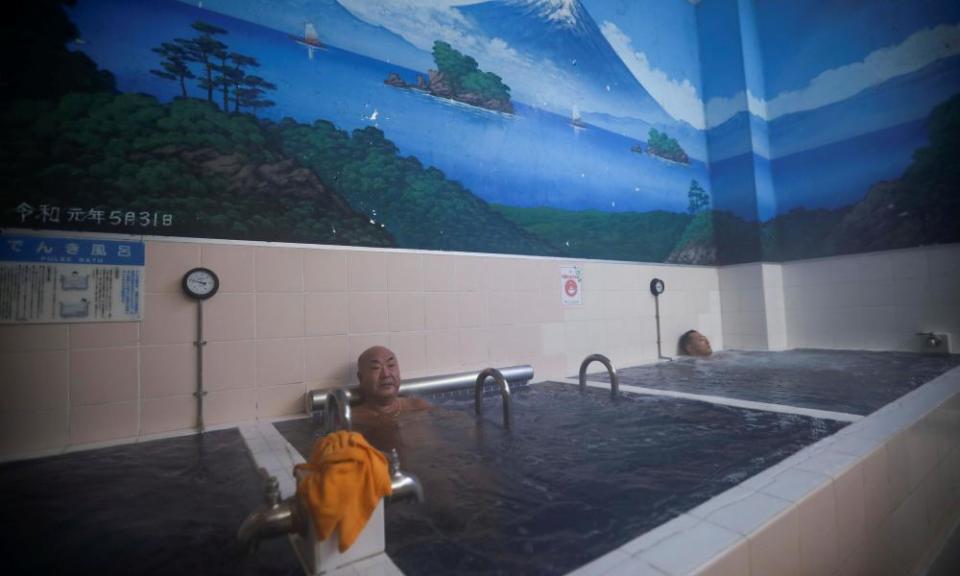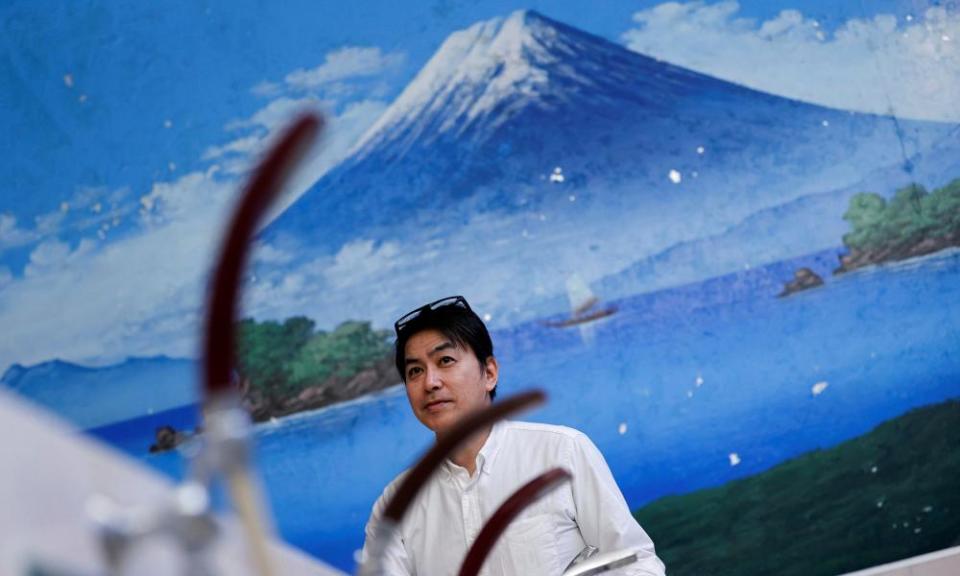The sento owners making group bathing in Japan cool again

It is a Japanese ritual that stretches back centuries: stripping off in the company of friends and neighbours before stretching out in the recuperative waters of a public bathhouse.
But almost half a millennia after the first sento opened in Tokyo, Japan’s modern-day bathhouses face an existential threat – and are fighting back by redefining the meaning of communal bathing.
In their heyday in the late 1960s, there were almost 18,000 bathhouses in Japan, according to a national sento association, with 2,800 in Tokyo alone. Nationwide the figure has slumped to below 2,000, with about 400 of them in the capital.
Japan’s postwar economic success gave working-class families the means to buy new homes where they could perform their ablutions in the privacy of their own bathrooms. Now, ageing sento owners are struggling to find successors to take over family-run businesses, while many premises are being swallowed up by rampant redevelopment.
The image of a sento as a slightly down-at-heel refuge for older men has long deterred younger customers, while the Covid-19 pandemic and rising fuel prices have only added to the sense that the tradition of hadaka no tsukiai (naked friendship) could one day become a cultural relic.
But a small and growing group of proprietors are making sento cool again, by enticing people who may never have experienced the simple pleasure of lowering themselves into piping hot water against the backdrop of a lovingly painted mural of Mount Fuji.
Related: Wearable fans help Japan’s hot dogs beat the heat
The new breed of sentō are about more than a shower and a soak. The offer post-bath craft beer and pizza made on the premises, music events that take advantage of the bathhouse’s impressive acoustics, early-morning opening times for people who want to bathe before work, saunas, traditional sweets and games for children, and book-lending services for just a few hundred yen a month.
“We saw people who were coming to a bathhouse for the first time,” said Sam Holden, an American who in 2020 co-founded Sento & Neighbourhood, a charity that refurbished Inari-yu, an old bathhouse in northern Tokyo, and turned an abandoned Edo-style row house next door into a space where squeaky clean bathers come to read, have a drink and a snack or take a nap on its tatami-mat floors.
Inari-yu now attracts 100-200 people a day – a mixture of veterans and younger people – who together bring in just enough income to keep it afloat.
“There are a lot of older people in this neighbourhood, so we didn’t want to rebrand the sento, but make it welcoming for regulars and new people alike,” said Holden, who has visited about 200 sento since first encountering them as a graduate student in Tokyo. “You come across a whole section of the population here – men and women, young and old, foreigners and people from different walks of life.

“They are somewhere to ground yourself in the city. When you go into a bathhouse, you’re in rhythm with other people … there’s a nice feeling about that.”
After the coronavirus pandemic hastened the demise of even more bathhouses, those that survived now have to contend with the soaring fuel prices, which forced authorities in Tokyo to raise admission for adults by ¥20 to ¥500 (£3.08) in July.
The many challenges have not deterred Sanjiro Minato, who quit his “boring” job as a salaryman and took over the running of the Ume-yu bathhouse in Kyoto in 2015.
“I loved going to sento when I was a university student and I was bothered by the fact that they were in decline,” said Minato, who attracted new customers with concerts and flea markets, and promotes Ume-yu on Twitter, where it has more than 16,000 followers.
When Minato took over the sento, most of his customers were older people; now more than half are in their 20s and 30s. “The problem was that young people didn’t really understand what sento were all about, but social media has helped change that.”
Shinobu Machida, Japan’s foremost expert on sento, concedes that ordinary sento will continue to close, but believes revamped bathhouses have a brighter future as their clientele undergo a subtle demographic shift.
“Young people are getting more interested in sento, and new owners are trying a fresh approach to keep them on board,” said Machida, who has written several books about Japan’s bathhouses.
“Westerners don’t think of a bath in the same way as the Japanese do,” added Machida, who has visited 3,800 bathhouses over the past 40 years. “They think of them as functional, but in Japan a bath has another, equally important role as somewhere to mentally and physically unwind. Bathing in a sento can be a spiritual experience.”

 Yahoo Movies
Yahoo Movies 